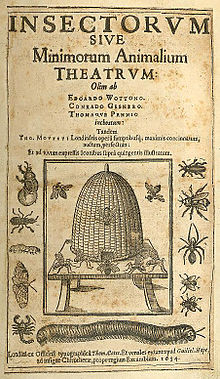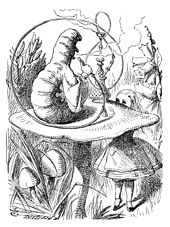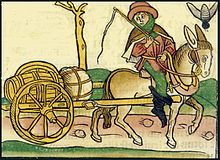
Yakumo Koizumi , born Patrick Lafcadio Hearn, was a Greek-Irish writer, translator, and teacher who introduced the culture and literature of Japan to the West. His writings offered unprecedented insight into Japanese culture, especially his collections of legends and ghost stories, such as Kwaidan: Stories and Studies of Strange Things. Before moving to Japan and becoming a Japanese citizen, he worked as a journalist in the United States, primarily in Cincinnati and New Orleans. His writings about New Orleans, based on his decade-long stay there, are also well-known.

Flies are insects of the order Diptera, the name being derived from the Greek δι- di- "two", and πτερόν pteron "wing". Insects of this order use only a single pair of wings to fly, the hindwings having evolved into advanced mechanosensory organs known as halteres, which act as high-speed sensors of rotational movement and allow dipterans to perform advanced aerobatics. Diptera is a large order containing an estimated 1,000,000 species including horse-flies, crane flies, hoverflies, mosquitoes and others, although only about 125,000 species have been described.

Locusts are various species of short-horned grasshoppers in the family Acrididae that have a swarming phase. These insects are usually solitary, but under certain circumstances they become more abundant and change their behaviour and habits, becoming gregarious. No taxonomic distinction is made between locust and grasshopper species; the basis for the definition is whether a species forms swarms under intermittently suitable conditions; this has evolved independently in multiple lineages, comprising at least 18 genera in 5 different subfamilies.

Horse-flies and deer flies are true flies in the family Tabanidae in the insect order Diptera. The adults are often large and agile in flight. Only female horseflies bite land vertebrates, including humans, to obtain blood. They prefer to fly in sunlight, avoiding dark and shady areas, and are inactive at night. They are found all over the world except for some islands and the polar regions. Both horse-flies and botflies (Oestridae) are sometimes referred to as gadflies.

Grasshoppers are a group of insects belonging to the suborder Caelifera. They are among what is possibly the most ancient living group of chewing herbivorous insects, dating back to the early Triassic around 250 million years ago.

The Ant and the Grasshopper, alternatively titled The Grasshopper and the Ant, is one of Aesop's Fables, numbered 373 in the Perry Index. The fable describes how a hungry grasshopper begs for food from an ant when winter comes and is refused. The situation sums up moral lessons about the virtues of hard work and planning for the future.
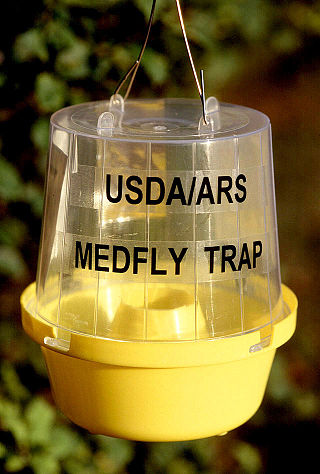
Insect traps are used to monitor or directly reduce populations of insects or other arthropods, by trapping individuals and killing them. They typically use food, visual lures, chemical attractants and pheromones as bait and are installed so that they do not injure other animals or humans or result in residues in foods or feeds. Visual lures use light, bright colors and shapes to attract pests. Chemical attractants or pheromones may attract only a specific sex. Insect traps are sometimes used in pest management programs instead of pesticides but are more often used to look at seasonal and distributional patterns of pest occurrence. This information may then be used in other pest management approaches.
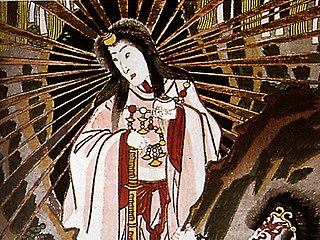
Kwaidan: Stories and Studies of Strange Things, often shortened to Kwaidan, is a 1904 book by Lafcadio Hearn that features several Japanese ghost stories and a brief non-fiction study on insects. It was later used as the basis for a 1964 film, Kwaidan, by Masaki Kobayashi.

Minuscule is a French live action and CGI TV series, produced by Futurikon and created by Hélène Giraud and Thomas Szabo. The TV series comes in the form of short segments – focusing mostly on a variety of insects – where their mundane, everyday lives take on a humorous turn. Superimposing stylized characters over real-life scenery, the main characters' comical scenarios come in the form of silent comedy. Aside from the main characters, animals and humans may also show up in minor roles, but the show does not utilize any proper spoken dialogue.

Insects have mouthparts that may vary greatly across insect species, as they are adapted to particular modes of feeding. The earliest insects had chewing mouthparts. Most specialisation of mouthparts are for piercing and sucking, and this mode of feeding has evolved a number of times independently. For example, mosquitoes and aphids both pierce and suck, though female mosquitoes feed on animal blood whereas aphids feed on plant fluids.

Dogon country is a region of eastern Mali and northwestern Burkina Faso populated mainly by the Dogon people, a diverse ethnic group in West Africa with diverse languages. Like the term Serer country occupied by the Serer ethnic group, Dogon country is vast, and lies southwest of the Niger River belt. The region is composed of three zones: the plateau, the escarpment and the Seno-Gondo plain.

Insects are hexapod invertebrates of the class Insecta. They are the largest group within the arthropod phylum. Insects have a chitinous exoskeleton, a three-part body, three pairs of jointed legs, compound eyes, and a pair of antennae. Insects are the most diverse group of animals, with more than a million described species; they represent more than half of all animal species.
In the 10th edition of Systema Naturae of 1758–1759, Carl Linnaeus classified the arthropods, including insects, arachnids and crustaceans, among his class "Insecta". He described the Insecta as:
A very numerous and various class consisting of small animals, breathing through lateral spiracles, armed on all sides with a bony skin, or covered with hair; furnished with many feet, and moveable antennae, which project from the head, and are the probable instruments of sensation.

Human interactions with insects include both a wide variety of uses, whether practical such as for food, textiles, and dyestuffs, or symbolic, as in art, music, and literature, and negative interactions including damage to crops and extensive efforts to control insect pests.

Insects have appeared in mythology around the world from ancient times. Among the insect groups featuring in myths are the bee, fly, butterfly, cicada, dragonfly, praying mantis and scarab beetle.

Insect names have appeared in music from Rimsky-Korsakov's "Flight of the Bumblebee" to such popular songs as "Blue-tailed Fly" and the folk song La Cucaracha which is about a cockroach. Insect groups mentioned include bees, ants, flies and the various singing insects such as cicadas, crickets, and beetles, while other songs refer to bugs in general.

Insects have found uses in art, as in other aspects of culture, both symbolically and physically, from ancient times. Artforms include the direct usage of beetlewing (elytra) in paintings, textiles, and jewellery, as well as the representation of insects in fine arts such as paintings and sculpture. Insects have sometimes formed characteristic features of artforms, as in Art Nouveau jewellery.
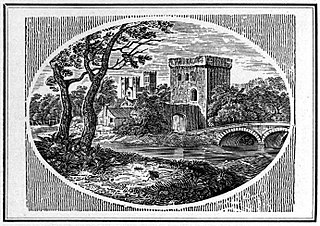
The Fly and the Ant is one of Aesop’s Fables that appears in the form of a debate between the two insects. It is numbered 521 in the Perry Index.

Terrestrial flies are a broad group of artificial flies used by fly anglers to imitate terrestrial insects that fall prey to fish in rivers, streams and lakes. Most typical are patterns imitating grasshoppers, crickets, ants, beetles, leaf hoppers, cicadas and moths.
